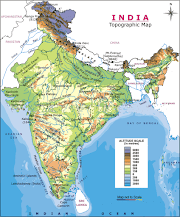How does the Moon turn red or 'Bloddy'?
The Moon 🌕has been an amazing thing to gaze from ancient times. Our poets took inspiration from it and their poetry revolved around it. We started taking interest in-universe only after gazing at the moon. Most of our ideas about mythology and astronomy revolved around it.
But, even today, there are some mysteries about the Moon that still remain unanswered. We're still finding out what's out there.
One of those mysteries is 'How does the Moon turn red?' (as shown in the image above). But, thankfully, this mystery has been answered!!!
How and why does the Moon turn red or 'Bloddy'?
Image source: Pixabay
Well, the answer to this question can be answered easily. It turns out that this phenomenon can also be observed in our daily life too!!!
This phenomenon can be observed during the day when the color of the sky is blue and during sunset/sunrise when the color of the sky is red. Well, that was a good hint! Did you get it?
Yes, the phenomenon is 'DISPERSION'!!! During the daytime, when the sun is overhead, the air molecules of the atmosphere find it easy to disperse the blue light of the spectrum. And, during the sunset/sunrise, the light needs to pass through more layers of the atmosphere because of which the lights with less wavelength gets dispersed more while the light (red) with more wavelength disperses less.
This is why the color of the sky at day is blue while during sunset/sunrise is red.
Now let's apply the same to the moon but this time, the dispersion of sunlight is done by the earth.
When the Earth comes between the Sun and the Moon, the sunlight gets blocked by Earth. Hence a lunar eclipse occurs. When a total lunar eclipse occurs, the moon reflects the light that was dispersed by Earth. This dispersion of light by the Earth's atmosphere is called 'RAYLEIGH SCATTERING'.
Now, due to more dispersion, the shorter wavelengths gets deviated while the longer wavelengths (red) do not. This red light strikes the surface of the moon which gets reflected towards Earth. That's why it is also called 'Blood Moon'.
This makes the moon glow red!!!
Now, due to more dispersion, the shorter wavelengths gets deviated while the longer wavelengths (red) do not. This red light strikes the surface of the moon which gets reflected towards Earth. That's why it is also called 'Blood Moon'.
This makes the moon glow red!!!
What did ancient people think about the 'Red Moon'?
Image source: Pixabay
Although ancient people loved the moon but sometimes it frightened them too.
When a 'Red Moon' used to occur, the ancient people of Greece used to think that a wolf ate it. Really!!! They used to shout to scare it to save their moon.
And, actually, Moon used to come back, not because of their shouting but because the total lunar eclipse lasts not more than a few minutes. But, for them, this does not matter. They just loved their Moon!!!
When a 'Red Moon' used to occur, the ancient people of Greece used to think that a wolf ate it. Really!!! They used to shout to scare it to save their moon.
And, actually, Moon used to come back, not because of their shouting but because the total lunar eclipse lasts not more than a few minutes. But, for them, this does not matter. They just loved their Moon!!!
When's the next 'Blood Moon'?
Image source: Pixabay
The last total lunar eclipse happened on July 27, 2018. It was gorgeous!!! The watchers named it, the "Super Blood Wolf Moon".
But there were many parts of the world which were not able to watch it. If you were in one of them, then cheers, you have got a second chance!!!
The next 'Blood Moon' is on July 16, 2019. But unfortunately, the people on the Western coast of North and South America won't be able to watch it. That's why it's called 'Secret Blood Moon'.
I know that doesn't sound so good, but for people living in these continents, the 'Blood Moon' won't appear until 2021.
But fortunately, it's not 'Secret' for the people in the Eastern half of the world!!! If you are in these continents, then you will get to see a gorgeous 'Blood Moon'. If you miss the opportunity to see it, then you won't get a 'Blood Moon' until 2021.
So, don't forget to have a nice date with your partner on the next 'Blood Moon'!!!
So, don't forget to have a nice date with your partner on the next 'Blood Moon'!!!
Just enjoy its beauty!!!
If you liked reading this, don't forget to share it. If you have any queries, don't hesitate, just comment!!!
Thanks for reading!!!







2 Comments
This is amazing ...keep your great content up 😍 Love you❤
ReplyDeleteThanks, I promise to do so!!!
Delete